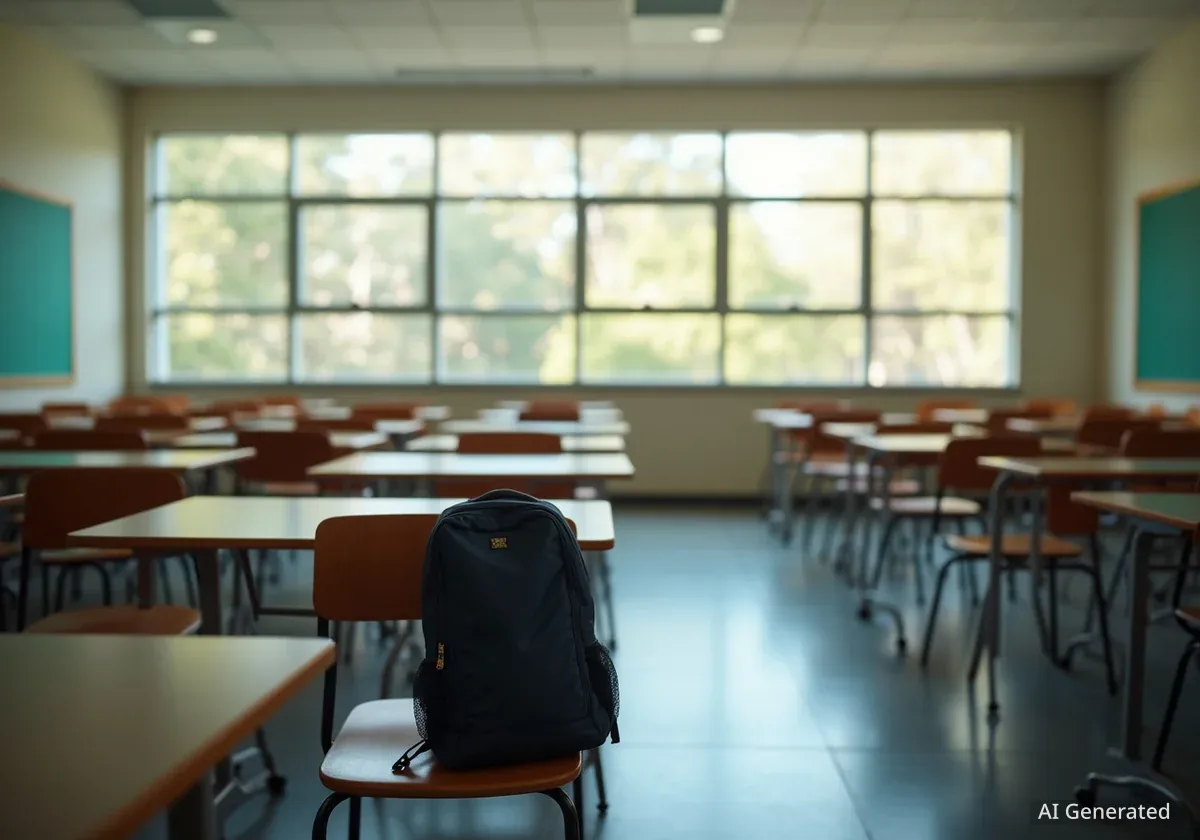The Fairbanks North Star Borough School District (FNSBSD) is projecting a significant drop in student enrollment, with preliminary figures showing nearly 500 fewer students than anticipated. This decline could result in a budget deficit of up to $5 million for the next fiscal year, according to district officials.
The projection comes as the district enters its crucial October student count period, which determines the amount of funding it receives from the state. While the final numbers are not yet confirmed, the potential shortfall is prompting early budget discussions.
Key Takeaways
- Preliminary data shows a student enrollment decrease of nearly 500 students in the FNSBSD.
- This drop could lead to a budget deficit estimated as high as $5 million for the upcoming fiscal year.
- The final deficit amount is uncertain and depends on several variables, including state funding, federal aid, and internal cost savings.
- This financial challenge follows the district's recent efforts to close a $16 million deficit, which involved school closures and program cuts.
Enrollment Numbers and State Funding
In Alaska, school funding is heavily tied to student enrollment numbers. Each October, districts conduct an official student count that is used to calculate their state aid through a formula known as the Base Student Allocation (BSA). The BSA is the largest single source of revenue for the FNSBSD budget.
Andy Degraw, the Chief Operations Officer for FNSBSD, presented the preliminary data to the school board's budget committee. He emphasized that these figures are an early estimate.
"The number is just an estimation for now," Degraw stated, noting that the official count period concludes on the last Friday of October. The final certified numbers will provide a clearer picture of the financial landscape.
How School Funding Works
The Base Student Allocation (BSA) is a per-pupil funding amount set by the state legislature. A school district's total state funding is determined by multiplying this amount by its number of students. Therefore, even a small change in enrollment can have a multi-million dollar impact on a district's annual budget.
Forecasting a Potential $5 Million Shortfall
The projected decline of nearly 500 students translates directly into a significant loss of state revenue. Based on current formulas, district officials have calculated that this could create a budget gap of up to $5 million for the next school year.
However, Degraw cautioned that this is a worst-case scenario. The final deficit is subject to a number of fluctuating financial factors that could either worsen or improve the situation.
"So if things line up in our favor, we could have a very small to no deficit. And at the same time if things don’t fall in our favor, they could be, I’ve estimated at this time as high as $5 million."
This news comes just one year after the district successfully navigated a much larger financial crisis. Last year, FNSBSD was forced to close a $16 million deficit, a process that required difficult decisions, including closing schools and eliminating academic programs.
Factors Influencing the Final Budget
While the enrollment numbers are a primary concern, several other financial elements will determine the district's final budget. Officials are monitoring these variables closely as they could significantly reduce the projected deficit.
Key Financial Variables
- Increased State Funding: The recent passage of House Bill 57 permanently increased the Base Student Allocation. This legislative change means the district will receive more funding per student than in previous years, which will help offset some of the losses from lower enrollment.
- Borough Contribution: The district received a larger contribution from the Fairbanks North Star Borough this year, providing additional revenue. The amount of future contributions will be a key part of budget negotiations.
- Staffing Costs: The retirement of long-time, higher-paid teachers and their replacement with new educators on lower salary contracts can lead to significant payroll savings for the district.
- Federal Impact Aid: Funding from federal impact aid is notoriously unpredictable. According to Degraw, this aid has varied widely in the past. "We’ve seen it as high as $20 million one year or as low as $10 million," he said. The amount received this cycle will be critical.
- Health Plan Savings: The district has also seen a recent exodus of employees from its health insurance plan, which is expected to lower overall healthcare costs and contribute to savings.
A History of Difficult Budgets
The potential $5 million deficit follows a recent period of intense financial pressure. Last year's $16 million budget gap forced the FNSBSD board to make unpopular cuts, demonstrating the serious consequences of funding shortfalls on students and staff.
Next Steps in the Budget Process
With the enrollment count still underway, the school board's budget committee is in the preliminary stages of planning for the next fiscal year. The committee's primary role at this point is to understand the potential deficits and explore options for balancing the budget.
Their findings and recommendations will be presented to the full school board, which will then begin the formal process of formulating the district's budget.
The timeline for these decisions is set. The school board is required to submit its recommended budget, including its funding request to the borough, by April 1, 2026. The coming months will be filled with analysis and debate as the district works to align its expenses with its projected revenue.





